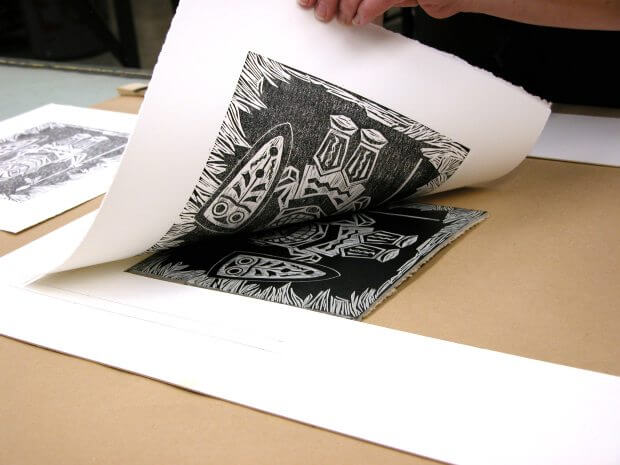
Linocut is a printmaking technique, a variant of woodcut in which a sheet of linoleum (sometimes mounted on a wooden block) is used for a relief surface. A design is cut into the linoleum surface with a sharp knife, V-shaped chisel or gouge, with the raised (uncarved) areas representing a reversal (mirror image) of the parts to show printed. The linoleum sheet is inked with a roller (called a brayer), and then impressed onto paper or fabric. The actual printing can be done by hand or with a printing press.
Since the material being carved has no directional grain and does not tend to split, it is easier to obtain certain artistic effects with Lino than with most woods, although the resultant prints lack the often angular grainy character of woodcuts and engravings.
Lino is generally diced, much easier to cut than wood, especially when heated, but the pressure of the printing process degrades the plate faster and it is difficult to create larger works due to the material’s fragility.
